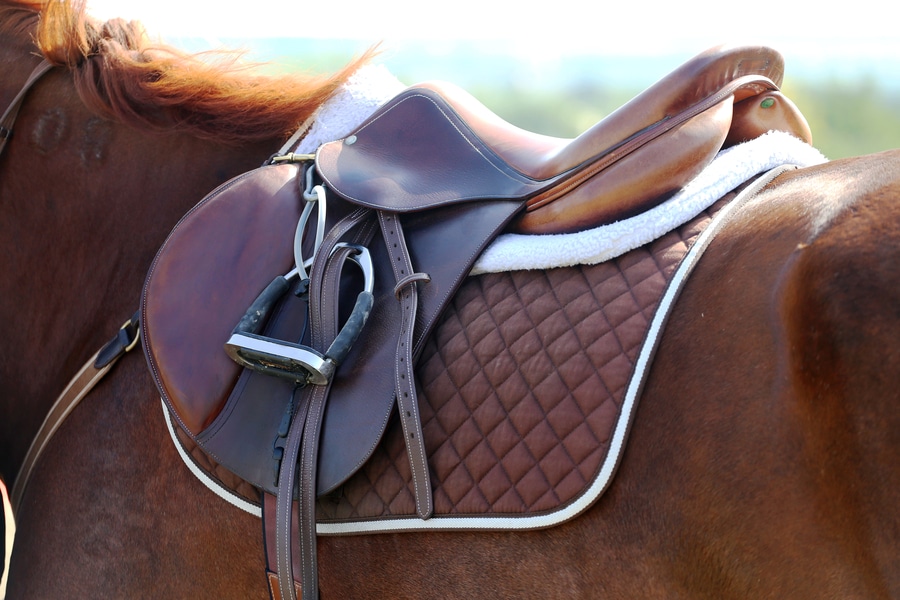When participating in the dressage sport, competitive riders are highly aware of the right equipment to use. For example, spurs are necessary pieces to keep handy as a teaching tool for your horse if they refuse to listen to a driving calf leg. Equestrians promote tack, saddle pads, custom saddles, and other items as key dressage equipment items.
At Performance Footing, we believe that horse footing is the #1 underlooked piece of dressage equipment. It is the key to superior horse performance during daily training and seasonal competitions that many competitors are unaware. They deal with the bad dressage arena footing consequences such as uneven and slick ground, yet do not connect it to their horse’s success.
Horse Footing and Biomechanics
To understand why footing is one of the essential dressage equipment pieces, you have to learn more about horse biomechanics. Only then will dressage riders see how terrible footing ruins their competition chances and training regiments. The stages of a horse stride and main horse footing components work hand-in-hand to show why you should consider the arena ground surface.
The Three Horse Stride Stages
The cycle for every horse stride occurs in three stages: the landing phase, the loading phase, and the rollover/push-off phase. Every second of the phases contributes to horse performance depending upon the arena ground surface quality.
1). Landing Phase
In the landing phase, the horse’s hoof makes the first contact with the ground and stops in place. This is the moment of initial impact where its leg muscles and bones send a shock through the ground.
2). Loading Phase
The entire foot pushes down on the arena surface after the hoof touches. All of the horse’s weight is quickly thrust downward, receiving support from the ground.
3). Rollover/Push-Off Phase
Once the foot plants with all its might, the horse pivots it into a toe rollover, propelling it into the next stride. The animal can send the next hoof slamming into the ground for the next horse stride cycle.
Main Horse Footing Components
The three-horse stride stages directly relate to the main horse footing components, which help support a horse’s weight during footfall. These primary elements of excellent horse footing are cushion, rebound, and grip, which determine a horse’s competition capabilities.
1). Cushion
Cushion, or how arena horse footing receives a shock, is crucial for creating top sports performance in dressage competitions. When the sand, additives, and other ground materials are too compact, the horse plants its entire weight during the landing and loading phases. No cushion reverses upward shock in support of the dressage horse, creating room for injury.
Similarly, the animal’s hoof digs into the ground and causes leg inflamation when the arena surface is soft and deep.
2). Rebound
The ability for the footing or material surface to return to its natural state after horse footfall is called rebound. The ground will absorb all the horse’s hoof impact during the landing phase if it is too hard.
An arena sand/footing mixture that is too deep forces the horse to exert additional energy from tendons, ligaments, and muscles in the loading phase. Horses cannot perform at their best with additional leg muscle stress, and judges may disqualify them from competition due to injury.
3). Grip
Arena surface footing traction is another way to describe grip, primarily seen in the landing and push-off phases. The tight ground prevents the horse’s entire stride when it stops the foot as it lands, leaving it behind its full sport potential.
A dressage equestrian’s animal has decreased confidence when footing is too slippery, causing its hoof to slide rather than stick. Even the best competition horses cannot compensate with bad footing since they either cannot roll into the next stride or dig into the ground in the push-off phase.
Invest in Your Horse’s Dressage Performance
Horse biomechanics prove that terrible horse footing negatively impacts a horse’s stride, decreasing its overall performance. The animal is more prone to injury when the arena surface is too tight or too soft, which can keep your competitor out of events for good.
We’ve spent over 40 years engineering our FoamFooting that has transformed arenas for dressage riders and what they consider the best equipment. Check out our product page or call us at 877.835.0878 for more information about our signature FoamFooting so you can see for yourself that it’s the top footing solution.
